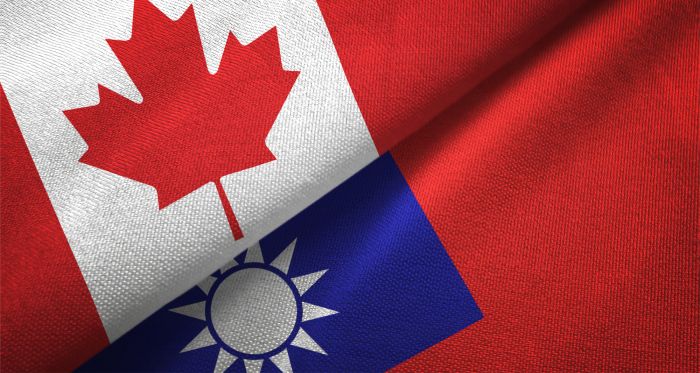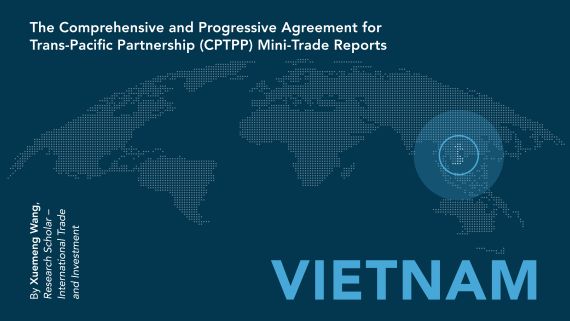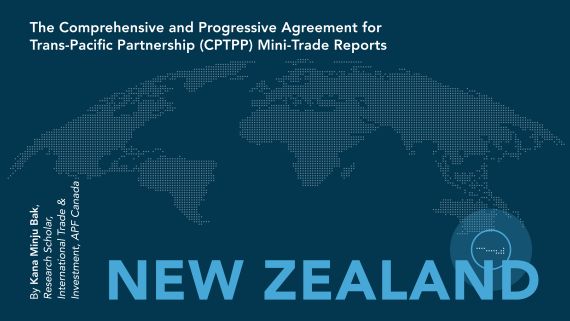As Taiwanese President Tsai Ing-wen returns home following her first stopover in the United States since the emergence of COVID-19, tensions in the Taiwan Strait have continued to mount. After Tsai's meeting with senior members of the U.S. Congress, including U.S. Speaker of the House of Representatives Kevin McCarthy, Beijing reacted with several days of military exercises around the island. This dangerous, repeating dynamic — in which increased support for, or diplomatic engagement with, Taiwan leads to a response by Beijing — has made management of the Taiwan issue one of the thorniest and most salient international challenges for concerned policymakers across the globe.
For many years, Canada, like the U.S. and most other states, has approached Taiwan under the constraints of a “One China Policy” (OCP). Under this policy, Ottawa has official, diplomatic relations with the People’s Republic of China alone and conducts only limited, informal diplomacy with Taipei.
Today, this OCP persists. But, as earlier Canadian optimism about close relations with the PRC has faded and Taiwan’s way of life is increasingly threatened, commentators have argued that Ottawa’s historic, extremely cautious approach to the OCP is out of sync with the priorities of Canadians and the conditions in the Taiwan Strait. Ottawa appears increasingly aware of this asymmetry and has started to adjust its approach in incremental ways.
These adjustments are warranted, and Ottawa can do more to engage with Taiwan. However, moderation is needed as Ottawa decides how far it will go. Although it continues to be a difficult compromise, the logic underlying the OCP remains intact, even though it has been weakened by the PRC’s trajectory. Equally importantly, Canada must continue to act with caution to ensure it is a net contributor to stability in the Taiwan Strait. This will require thoughtful engagement that increases Taiwan's resilience while simultaneously balancing between Canada’s multiple foreign policy goals.
The One China Policy
Canada’s OCP dates to 1970, when Canada switched its diplomatic relations from Taipei to Beijing. As long-time China expert Bernie Frolic recounted recently, Ottawa did not agree to the PRC’s sovereignty over Taiwan when negotiating with Beijing to make this switch. Instead, Ottawa “took note” of the PRC position that Taiwan is part of “one China,” and agreed to recognize Beijing as the sole representative of “China” in international affairs.
Since then, Ottawa has informally conducted diplomacy with Taiwan, but Canada’s engagement has been limited and cautious. For example, when Brian Mulroney’s Progressive Conservative government opened a trade office in Taiwan in 1986, it took measures to avoid the suggestion that Canada was conducting state-to-state diplomacy with Taiwan. The office was opened, but its name was both unofficial, referencing the Canadian Chamber of Commerce, and subnational, referencing only Taipei and not Taiwan.
Even Stephen Harper’s Conservative government, which came to power in 2006 ready to turn a cold shoulder to Beijing and show its affinity for a recently democratized Taiwan, did not substantially deviate from past practice. Parliamentary visits to the island increased and Ottawa continued supporting Taiwan’s non-state participation in technical international bodies such as the World Health Assembly. But as relations with Beijing warmed, Harper’s government changed its tone. Most strikingly, Ottawa reaffirmed Canada's OCP during Harper’s 2009 visit to Beijing, effectively pouring cold water on the hopes of a small contingent of Conservative Members of Parliament that had publicly argued for greater support for Taiwanese independence before the Conservatives had formed government.
Today, the OCP remains a fixture of Canadian foreign policy, but there are signs that Ottawa is looking to strategically deepen its engagement with Taiwan while cautiously avoiding destabilizing actions. In February 2023, Canada’s trade minister, Mary Ng, spoke with her Taiwanese counterpart to launch formal negotiations on a Foreign Investment Promotion and Protection Agreement (FIPPA). This is significant not only for the economic benefits that could flow from this potential agreement, but for the signal that Justin Trudeau’s government is increasingly open to high-profile meetings to discuss economic exchanges at the ministerial level. In addition, Taipei recently announced that it will open a fourth representative office in Canada, in Montreal, likely with consent from Ottawa.
Militarily, Canada’s navy continues to establish a pattern of periodically transiting the Taiwan Strait, with public encouragement from Taiwan’s foreign minister. And in August 2022, Canada spoke out with other G7 countries in response to the PRC’s aggressive actions toward Taiwan following the visit of then-U.S. Speaker of the House of Representatives Nancy Pelosi.
Thus, while Canada’s OCP remains in place, debates about the content of Canada’s engagement with Taiwan have recently been reopened at the political level. This state of flux raises the question: how much should Canada adjust its approach as the risks of both inaction and ill-considered action become clearer?
Demands for Deeper Engagement with Taiwan
Discontent with Canada’s approach to Taiwan is not new. As early as the Pierre Elliott Trudeau era, Ottawa was heavily criticized, both domestically and internationally, for its refusal to allow Taiwanese athletes to participate in the 1976 Montreal Olympics under the name “Republic of China.”
Various parliamentarians have also pushed for Ottawa to adjust its practices under the OCP. For example, in March 2023, the Parliamentary Special Committee on Canada-China Relations made recommendations to deepen Canada’s engagement with Taiwan, including encouraging parliamentary delegations, declaring support for Taiwan’s self-determination, and increasing trade linkages. Stretching back further, multiple private members’ bills have also tried, albeit unsuccessfully, to force the hand of the Canadian executive branch on Taiwan. Most recently, a 2021 bill unsuccessfully proposed various reforms to move Canada closer to formally treating Taiwan as a sovereign state. These included giving Taiwan the capacities and immunities afforded to recognized states in Canadian courts and allowing Taipei’s representative offices in Canada to switch their subnational naming to reference the “Taiwan Representative Office.”
In recent years, Canada’s think-tanks and newspapers have also published pieces urging the government to deepen its engagement with Taiwan. While most of these pieces are cautious enough to argue for changes within the confines of Canada’s OCP, they vary in their restraint. For instance, a 2018 piece urges Canada to “reassess the wisdom of sticking to its rigid ‘one-China’ policy and decades-long caution on all aspects of its very limited relationship with Taiwan.” Bolder commentators, like The Globe and Mail’s Andrew Coyne, suggest Canada should “recognize Taiwan’s independence” and support its involvement in international organizations, or incrementally move toward recognition of Taiwan.
Other authors argue in favour of the 2021 private member’s bill referenced above, or a Canadian Taiwan Relations Act, modelled on the U.S. law that Congress passed in 1979 to support Taiwan in response to the White House switching diplomatic relations to Beijing that year.
Commentators also frequently recommend less drastic measures, such as increased trade and other diplomatic exchanges, but there is often a sense that more should be on the table. For example, one commentator who generally counsels restraint, suggests that “situations could arise” where recognition may be the “best strategy to deter war.”
Much of this commentary appears to call for Canada to engage with Taiwan “on its own merits,” seemingly isolating policy on Taiwan from concerns about Beijing’s reactions. Many go even further, and insinuate, or expressly state, that Ottawa has limited its engagement with Taiwan out of appeasement or deference to Beijing’s preferences, and that such deference must stop.
Why Deepen Engagement with Taiwan?
These actors are correct that there is a compelling case for deepening Canada’s engagement with Taiwan.
First, Canada has a valuable bilateral trade relationship with Taiwan, which both parties would benefit from expanding. Moreover, as technologically advanced and democratic societies, Canada and Taiwan can learn from each other across diverse areas including disease prevention, advanced technologies, democratic resilience, human rights, and Indigenous reconciliation. Many Canadians also see their values reflected in Taiwanese society, contributing to Canadian affinities for Taiwan and parliamentary support.
Second, the PRC has changed. PRC President Xi Jinping has reversed the trajectory of the PRC’s reform era and doubled down on authoritarianism at home and a brash foreign policy abroad. Examples in this vein are many, including Beijing’s hostage diplomacy, its National Security Law for Hong Kong, the mass detention of Uyghurs and other ethnic minorities in Xinjiang, and its “no limits” partnership with Russia, despite the latter’s full-scale invasion of Ukraine. Such choices have undermined earlier Canadian optimism that an era of warm Canada-PRC relations could be squared with Canada’s interests and values, opening up space to reconsider the degree to which relations with the PRC are prioritized.
Third and finally, Taiwan’s predicament has changed. Cross-strait relations have deteriorated precipitously since Beijing cut off high-level cross-strait dialogue following the 2016 election of current Taiwanese president Tsai Ing-wen from the anti-unification Democratic Progressive Party (DPP). Unable to extract rhetorical concessions from Tsai, Beijing has pursued a policy of military intimidation and psychological warfare against Taiwan, increasingly sending People’s Liberation Army (PLA) Air Force aircraft and ships closer to the island and across the Strait’s median line — an unofficial buffer. In addition, Xi’s extensive modernization of the PLA has shifted the balance of power in the Strait, rendering the status quo, under which Taiwan is autonomously (and democratically) governed from Taipei and maintains its own military with the support of U.S. arms sales, increasingly unstable. In response, Taiwan’s officials have turned to countries like Canada with increased urgency, asking them to increase engagement with the island to signal that Taiwan does not stand alone.
Canada is beginning to heed these calls, but Ottawa’s recent efforts to update its approach remain minor when compared with these radically shifting conditions and the deeper calls for change outlined above. Further proactive adjustments, such as increased economic engagement with Taiwan, would achieve greater coherence between policy and Canadian attitudes. Such policy tweaks would also help deter military coercion in the Taiwan Strait, relieving pressure on Taiwan and enhancing stability of the cross-strait status quo by showing that Taiwan does not stand alone. Moreover, adjustments today will reduce the need for Ottawa to play catch-up in the fog of a potential crisis, enhancing the likelihood of well-reasoned decision-making.
The Importance of Moderation
The challenge for Ottawa in adjusting its approach to Taiwan is to balance the multiple aims of Canada’s foreign policy.
Despite the points raised above, Canada maintains an interest in pursuing constructive relations with Beijing. While close relations at the national political level are increasingly out of reach, Canada’s original decision to pursue diplomatic relations with Beijing was based on an acceptance of Beijing’s influence on world affairs and the PRC’s potential as a trading partner. Despite the need to confront the PRC on an expansive list of issues, the calculation that engaging the PRC is in Canada’s interests still stands.
Moreover, adjustments to engagement with Taiwan should be made while considering Canada’s overall foreign policy, including the role Canada aspires to in global affairs and in the Indo-Pacific. Canada’s recent Indo-Pacific Strategy makes clear that this includes revitalizing Canada’s role as a trusted interlocutor that will contribute economically and diplomatically to stability and prosperity in the region.
Given these aims, it is difficult to see how actions that intentionally inch closer to formal recognition of Taiwan represent an optimal balance of these interests. This includes actions that signal Canada is moving towards recognizing Taiwan as a de jure independent country, such as changing the names of diplomatic missions or elevating Taiwan’s diplomatic representatives to the official ambassadorial level.
This is true even if one prioritizes increasing engagement with Taiwan. Canadians are willing to forego some economic opportunities with the PRC to take a more principled approach to Taiwan, but the benefits of this approach cannot be looked at in isolation.
Most significantly, it is hard to separate the question of Taiwan’s international status from Canada’s interests in promoting regional peace and stability. Beijing insists that Taiwan is an inalienable part of China and has the military capabilities and apparent willingness to fight a destructive war to prevent Taiwan’s independence. Moreover, Beijing increasingly views foreign powers, especially the U.S., as attempting to challenge the cross-strait status quo — a perception likely to be further inflamed as U.S. presidential primaries begin and a competition on hawkishness toward the PRC heats up. Canadians may not agree with Beijing’s assessment but cannot ignore that steps towards formal recognition of Taiwan will contribute to and perhaps validate this perception, rendering the status quo increasingly unstable.
Critics will argue that this is simply deferring to the PRC’s preferences, but this misses the point. Incorporating the risk of conflict into Canada’s decision-matrix does not validate the moral or legal acceptability of Beijing’s military threats against Taiwan. Rather, it takes the world as it is, incorporating the effects of Beijing’s possible reactions into Canada’s strategic calculus.
In addition, actions that move towards Canadian de jure recognition pre-empt a decision by the Taiwanese people themselves. Polling suggests the Taiwanese people do not presently favour moving for independence and remain divided on the road ahead. As a result, prioritizing more flexible strategies of engagement is prudent. This is especially true given that the DPP’s approach to cross-strait relations under Tsai, which backed away from closer relations with the PRC, may soon be unsettled by the upcoming 2024 presidential election, when the term-limited Tsai will step down.
The Road Ahead
This leaves Ottawa seeking an intermediate approach that balances between maintaining Canada’s commitment to the OCP while deepening engagement with Taiwan in a manner that enhances, rather than undermines, the cross-strait status quo.
One approach to striking this balance would be to explore all available opportunities to deepen engagement with Taiwan in the economic realm. Here, commencing FIPPA negotiations is a good start, but there is likely room for Ottawa to increase its ambition. Not only is a FIPPA a relatively simple agreement to negotiate, but the long delay (over a year) between starting preliminary talks with Taipei and announcing full negotiations suggests room for greater prioritization of the Taiwan issue. Canada could also go further, reversing its earlier refusal and stating preliminary support for Taiwan’s accession to the Comprehensive and Progressive Agreement on Trans-Pacific Partnership (CPTPP), as Tokyo has done, or making clear its intention to negotiate a bilateral trade agreement.
These actions would publicly indicate to both the PRC and Taiwan’s citizens that Canada has the political will to support Taiwan. This would not only help address the psychological aspect of Taiwan’s predicament, but also enhance Taiwan’s resilience against Beijing’s economic coercion by opening access to the Canadian market. This initiative could also encourage other countries to do the same, leading by example.
Beijing would likely take exception to such actions, but the risk of an outsized reaction from Beijing seems contained relative to these benefits. Unlike symbolic actions moving toward recognition of Taiwan, there are legitimate economic rationales for these acts that Ottawa could use to de-emphasize the political nature of the act and make clear that Ottawa is not revising its OCP. For instance, since Taiwan is considered a separate customs territory in the World Trade Organization, other economies are empowered to negotiate directly with Taipei through this international body on issues such as trade barrier reductions. Canada could even support its economic rationale with concrete examples of the gains for New Zealand’s exporters after conclusion of a bilateral deal with Taipei in 2013. PRC reactions to Canada’s announcement of FIPPA negotiations have also been unremarkable, suggesting some room to maneouvre.
Pursuing economic engagement is also consistent with Canada’s own comparative advantages. Investing in the future of Canada’s military is important, but Canada’s military capabilities will not improve overnight. Today, Canada is well placed to lead on economic engagement given its existing membership in the CPTPP, its sophisticated economic diplomacy, and its economic weight as a member of the G7.
Such economic engagement can also be combined with forward-looking policy that asks what Canada can do to support Taiwan in the event of an acute crisis. To facilitate this, policymakers should study how Canada can prepare sanctions responses and loan programs to support Taiwan’s economic resilience under military duress and consider if the U.S.'s recently passed Taiwan Enhanced Resilience Act offers any ideas that meet the criteria outlined here.
***
Ultimately, any adjustments to Canada’s engagement with Taiwan will involve tradeoffs and potential costs. The world has changed since Canada’s introduction of its OCP, and Canada’s foreign policy should, and is, changing to reflect that. The challenge for policymakers will be to maintain an awareness of the costs entailed in deepening Canada’s relationship with Taiwan, while also recognizing that only through actions that sufficiently deter Beijing’s aggression can the international community reinforce the status quo in the Taiwan Strait and contribute stability to the region.
At the same time, being overzealous in support of Taiwan risks catastrophe, undermining the international community’s ability to create political space for a long-term, peaceful cross-strait resolution. By following the suggestions made here, the hope is that policymakers can devise an updated approach to Taiwan that is sensitive to these realities, Canada’s capabilities, and the need to be flexible as circumstances in the Strait continue to change.





